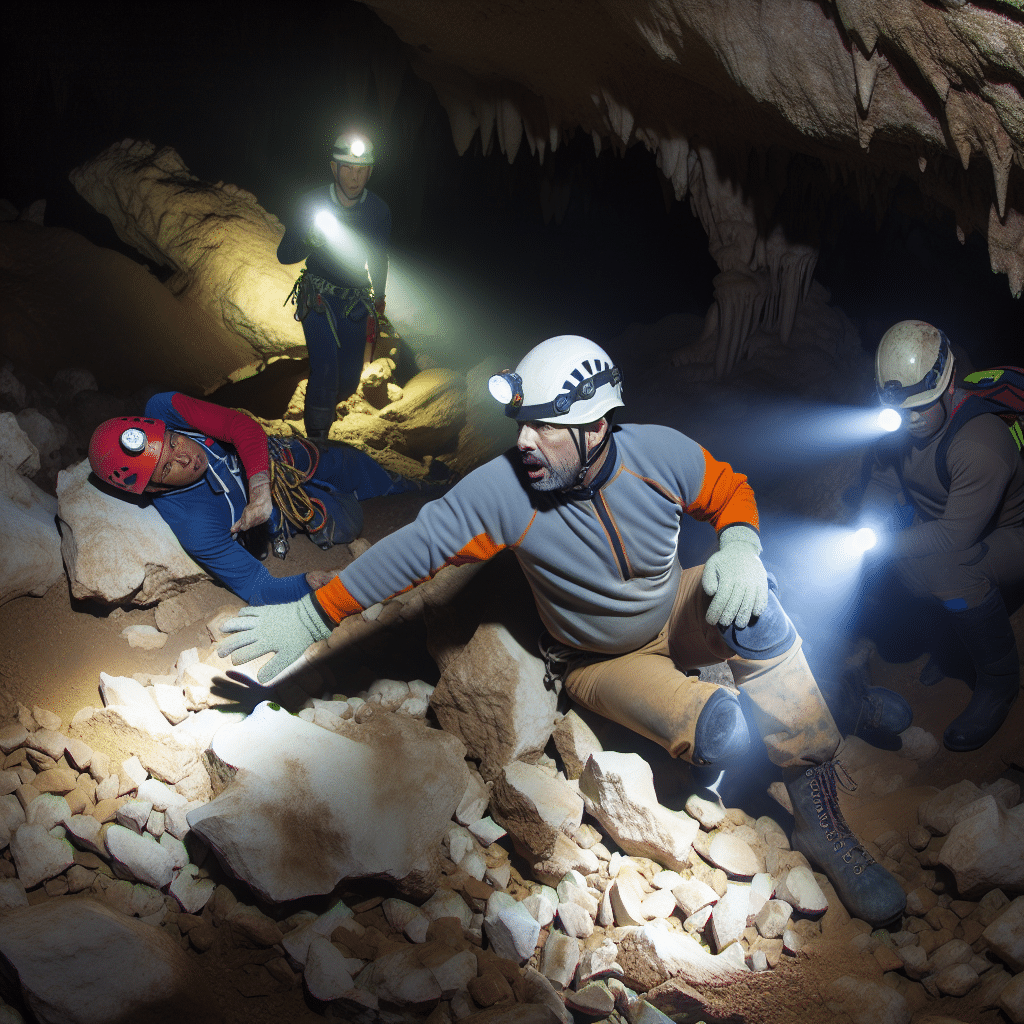Caving, also known as spelunking, is an exhilarating activity that draws adventurers into the mysterious and unexplored depths of the Earth. However, the allure of discovering new passages and hidden chambers is not without its risks. Caving accidents are a stark reminder of the dangers inherent in this subterranean pursuit. This article delves into the causes of caving accidents, safety measures, and stories of both triumph and tragedy in the caving community.

What Causes Caving Accidents?
Like all adventure sports, caving is fraught with potential hazards. Understanding the primary causes of caving accidents can help enthusiasts prepare better and mitigate risks.
Geological Hazards
Caves are dynamic environments subject to natural changes. Rockfalls, cave-ins, and sudden flooding can occur without warning. The instability of cave formations means that even a minor disturbance could trigger a significant collapse, potentially trapping or injuring cavers.
Physical Exhaustion and Panic
Caving is physically demanding, requiring endurance, strength, and mental fortitude. Many accidents occur due to fatigue, which can impair judgment and reaction times. Additionally, the confined, dark spaces of caves can induce panic in even the most seasoned explorers, leading to poor decision-making and accidents.
Inadequate Equipment and Poor Preparation
One of the most preventable causes of caving accidents is the use of inadequate or inappropriate equipment. Helmets, ropes, and lighting are essential for safe caving, and their failure can be catastrophic. Furthermore, explorers who enter caves without adequate preparation or without informing others of their plans are at a heightened risk.
Tragic Tales: Notable Caving Accidents
While many cavers enjoy their adventures without incident, some stories serve as grim reminders of the sport’s inherent dangers.
The Nutty Putty Cave Accident
One of the most well-known caving accidents occurred in the Nutty Putty Cave in Utah in 2009. John Jones, an experienced caver, became trapped in a narrow, uncharted passage. Despite a prolonged and intense rescue effort, rescuers were unable to free him, and he tragically passed away. This incident highlights the importance of respecting cave boundaries and recognizing personal limits.
Thailand Cave Rescue
In 2018, the world watched as twelve boys and their soccer coach were trapped for over two weeks in the Tham Luang cave in Thailand. Flash floods had filled the cave system, cutting off their exit. The complex and dangerous rescue operation involved international divers and led to the unfortunate death of Saman Kunan, a former Thai Navy SEAL. This story underscores the unpredictable nature of caves and the heroism required to save those trapped within them.
How to Prevent Caving Accidents
While the risks of caving cannot be entirely eliminated, proper preparation and adherence to safety protocols can significantly reduce the likelihood of accidents.
Pre-Caving Preparation
Research and planning are crucial before any caving expedition. Knowing the cave’s layout, potential hazards, and weather conditions can help cavers prepare adequately. Always inform someone outside the cave of your plans and expected return time.
Use of Proper Equipment
Investing in high-quality caving gear is non-negotiable. Helmets, headlamps, and sturdy ropes are essentials. Additionally, carrying a first-aid kit, extra batteries, and food supplies can be lifesaving in an emergency.
Team Coordination and Training
Caving should never be a solo activity. Working as a team and maintaining constant communication can prevent many accidents. Regular training and familiarization with cave rescue techniques can also prepare cavers to handle emergencies more effectively.
The Role of Rescue Teams in Caving Accidents
Cave rescue teams play a vital role when accidents occur. These highly trained groups undergo rigorous preparation to navigate the treacherous conditions of cave rescues.
Technical Skills and Equipment
Rescue teams utilize specialized equipment and techniques to reach trapped or injured cavers. Their skills in navigation, medical care, and engineering are crucial for the survival of those in peril.
Coordination and Collaboration
Effective cave rescues often involve collaboration between multiple agencies and experts, including local authorities, medical personnel, and experienced cavers. The success of these operations depends on seamless coordination and the ability to make quick, informed decisions under pressure.
Conclusion
Caving offers a unique blend of adventure and discovery but is accompanied by significant risks. Caving accidents, often fatal, serve as sobering reminders of the importance of preparation, proper equipment, and respect for the subterranean environment. By learning from past tragedies and adhering to safety protocols, cavers can enjoy the thrill of exploration while minimizing the dangers. As the caving community continues to grow, fostering a culture of safety and responsibility remains paramount in ensuring that the allure of the underground does not turn into a fatal attraction.



